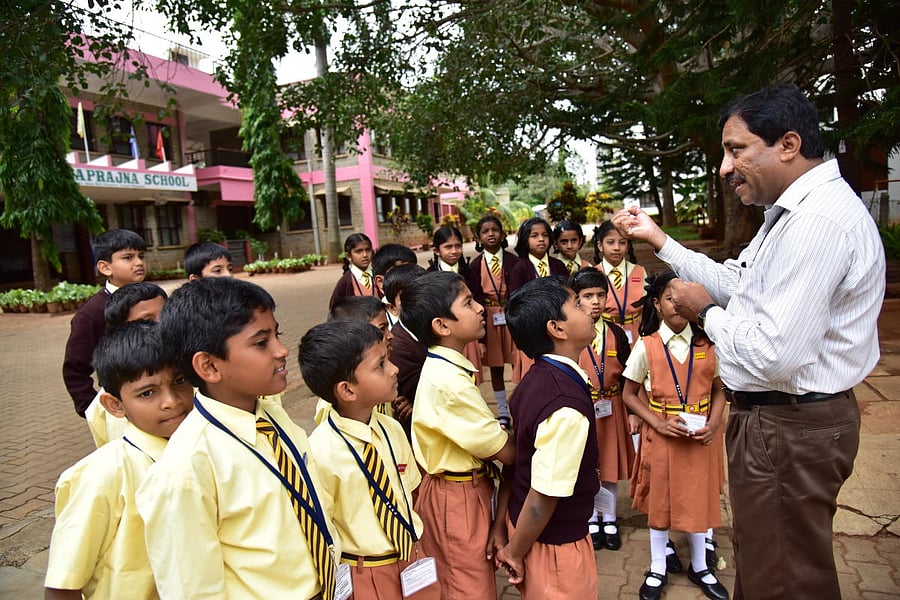
Recall the last time you were angry with someone. Perhaps, your spouse dilly-dallied, delaying your departure from home, which caused you to miss your flight. Or, just as you are hurriedly getting ready for a wedding, you discover that your neatly folded and ironed brocade blouse or Armani shirt has been besmirched by the dhobi. Do you feel your annoyance escalating? Now, suppose you narrate these episodes to a friend or relative and instead of empathising with your plight, they brush off your irritation with an, “Oh, that’s no big deal! Don’t be so upset.” Do you feel less piqued as a result?
Contrary to popular belief, dismissing or denying our feelings doesn’t make them magically evaporate. Yet, this is what adults often do to kids. Parents may berate their angst-ridden sixteen-year-old for fussing about her acne before a school performance. Or, when a teacher finds a student staring glumly at a comprehension passage, adds, “If you show some interest, you will turn in better work.” However, in both cases, the advice from adults doesn’t penetrate but only makes the child more worried or disengaged.
Communication experts, Adele Faber and Elaine Mazlish, have authored a number of best-selling books to help adults get across empathetically and effectively to children. In How to Talk So Kids Can Learn, the authors provide principles and strategies for parents and teachers. Adopting their approach might mean that you have to unlearn lessons you imbibed from adults in your childhood. The authors admit that “We’re products of our past.” Thus, we speak to our kids the way we were spoken to.
So, when a child complains or is feeling down, typical adult responses may mirror past exchanges. A high-schooler is ruffled because her best friend isn’t in her section. To cheer up the child, the parent may unwittingly add, “That’s not such a big deal. You can still see her at the break. Besides, the main reason you go to school is to study, not socialise.” A ten-year-old who looks frustrated during a test keeps erasing answers over and over. The teacher, walking down the aisle, comments, “If you have studied for the test, you won’t need to erase so often. No point getting upset now.” A fifteen-year-old flings his bag on the sofa, bemoaning, “I hate my Maths teacher. She’s given us 50 sums as homework.” “What do you expect when you have your Boards in two months’ time?” asks the well-meaning parent.
Listen to them
In each example, the adult is belittling or negating the child’s feelings without necessarily realising the import of their words. Whether we proffer advice, question kids or defend the person they are angry with, we communicate that the perspective of the child doesn’t really matter. However, as we can testify from our own experiences, “when feelings are denied,” it doesn’t make us feel better.
The first step in improving our communication with children is to acknowledge their feelings. Thus, you may empathise with your teenage daughter, saying, “Not having your best friend in the same section can be upsetting.” When the teacher spots the student erasing repeatedly, she can softly add, “Looks like you are finding the test hard. Would you first like to answer the questions you are sure of?” To take the edge of a child’s irritation, Faber & Mazlish recommend that you “Give the child in fantasy what you can’t give in reality.” So, when your kid protests about his homework, you may cajole, “Wouldn’t it be great if you had a genie who could complete those 50 sums for you?”
Sometimes, kids are likely to express disrespectful sentiments that you find distasteful. However, Faber and Mazlish contend that empathising with the child doesn’t mean that you agree with what he or she is saying. On the contrary, you are trying to view the situation from the child’s perspective. And, knowing that an adult cares about their point of view can really make a world of difference. So, if your son exclaims, “I hate my teacher” or “Dad sucks,” you don’t have to dislike the teacher or Dad. Instead, when you say, “You sound angry,” you are conveying that you are hearing what your child is expressing. And, when kids feel heard, they are more likely to try and see your perspective as well.
Respond with dignity
But what if a child is indulging in inappropriate or harmful behaviours like hitting another child or throwing paint on the floor? Sure, you should put a stop to unacceptable displays right away. However, you may still acknowledge the child’s feelings regarding a situation without condoning undesirable behaviour. So, when Aman lashes out at his brother, his parent may respond, “Aman, I see that you are very angry. But we use words in this house to communicate. Violence is not permitted.” Likewise, if a first-grader to splashing paint over the floor, her art teacher may intervene, “Nisha, it looks like you enjoy painting on the floor. But the class rule is that we don’t dirty or damage school property.”
Ultimately, our role as parents and educators is to ensure that kids evolve into cooperative and considerate adults. As Faber and Mazlish sagely point out, “If we want our students to be caring human beings, then we need to respond to them in caring ways.” Moreover, in order to be effective teachers, they argue that we “need students who are emotionally ready to listen and learn.” And, only by building rapport can we share ideas and concepts with them. In fact, if adults also learn to communicate with each other empathetically, our lives will be less riddled with resentment, rancour and rage. By responding to our children with dignity, we model the very behaviour we expect of them.
(The author is director, PRAYATNA)